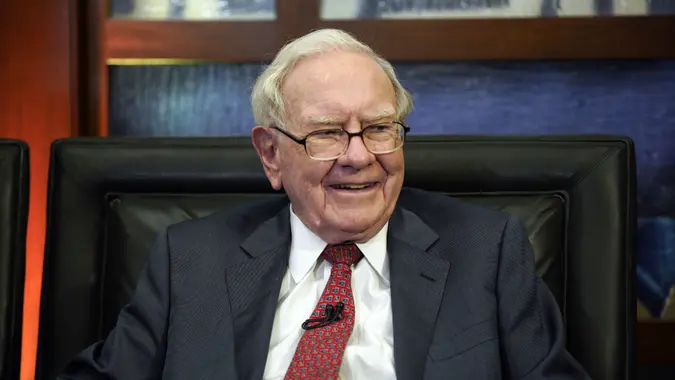Experts’ Top 4 Predictions for 2026’s Stock Market — and What They Mean for Investors

Commitment to Our Readers
GOBankingRates' editorial team is committed to bringing you unbiased reviews and information. We use data-driven methodologies to evaluate financial products and services - our reviews and ratings are not influenced by advertisers. You can read more about our editorial guidelines and our products and services review methodology.

20 Years
Helping You Live Richer

Reviewed
by Experts

Trusted by
Millions of Readers
The stock market has seen its share of tumult in 2025. Markets whipsawed in reaction to President Donald Trump’s tariffs in April, only to bounce back and experience growth.
Despite the uptick, investors may be nervous as they wonder what’s in store for stocks in 2026. Many experts see a mix of opportunities and risks for the stock market next year.
Also see what to do with your money before the end of the year.
Falling Interest Rates Could Spark Both Relief and Risk
Interest rates have been in the headlines this year, with rates being lowered in September. The Federal Open Market Committee (FOMC) anticipates two more rate cuts this year, according to Yahoo Finance, which may spur activity into 2026. Unemployment rates are key to watch here for 2026.
“With unemployment rising, the Fed will probably set monetary policy to address unemployment and cut interest rates,” said Stephen Callahan, trading behavior specialist at Firstrade.
Lowering rates can help boost stocks, but it’s not a guarantee, so investors may need to brace for heightened risk. “A sharp correction in 2026 wouldn’t surprise me, especially if rate cuts fail to stimulate real growth or if inflation expectations become unanchored,” said John Murillo, chief business officer of B2BROKER.
Inflation May Continue To Weigh on Consumers
Inflationary pressures have been a significant challenge for many Americans in recent years. The FOMC, in part, reduces rates to counter that, but that alone may not be enough, and inflation may continue to remain stubborn.
“We believe the 2026 inflation rate will be higher than this year, which would erode consumer purchasing power and weight on consumer spending,” Callahan said.
Tariffs may make matters worse. “On top of this, we assume that tariff rates will remain elevated, which will also result in higher inflation and could become evident in higher consumer prices,” Callahan said.
Continuously high inflation could harm consumer-driven sectors, potentially hindering stock prices.
AI May Face Headwinds, but Growth Is Still Possible
Artificial intelligence (AI) technology has been filling headlines, with some wondering whether there’s an AI tech bubble. More analysts are concerned that the bubble may burst in the near future, according to AP News.
Growing unease drives uncertainty. “That backdrop makes me generally cautious on equities. Valuations in several sectors became stretched, and the AI narrative, while compelling, hasn’t yet demonstrated consistent earnings power,” Murillo said.
Despite that, firms continue to invest in AI, so there may be more room for growth in the tech.
“The long-term trends playing in the market’s performance include anything related to energy infrastructure, especially electricity. As long as the AI boom continues many large technology companies will be spending a lot of money to invest in and build data centers, and the companies affiliated with these projects … Overall, Wall Street is cautiously optimistic and expects the ongoing AI boom and falling interest rates to support the market, despite the rising inflation,” Callahan said.
Defensive Plays May Outperform
Volatility is always possible in the stock market. Uncertainty of the times can ramp up the turmoil, which is a possible reality in 2026. Defensive investing is a legitimate way to mitigate increased risk, according to Fidelity, as it aims to limit the impact of falling stock prices by focusing on fundamentals.
“I think 2026 may be less about chasing innovation narratives and more about rediscovering fundamentals: cash flow, supply chain control and geopolitical insulation. Investors who adapt early will be better positioned to hedge themselves against what could be a very different market cycle,” Murillo explained.
Companies with regular cash flows may be wise to pursue here. “As for positioning, I’d look at companies with real pricing power and exposure to recurrent flows and hard assets, especially those in energy, infrastructure and commodity-linked supply chains. In a world of policy drift and inflation recalibration, tangible value may outperform tech-driven hype,” Murillo said.
After the tumultuous year for stocks in 2025, more may be in store for 2026. Investors who focus less on hype and more on stable companies may emerge as winners in 2026.
 Written by
Written by  Edited by
Edited by 

























